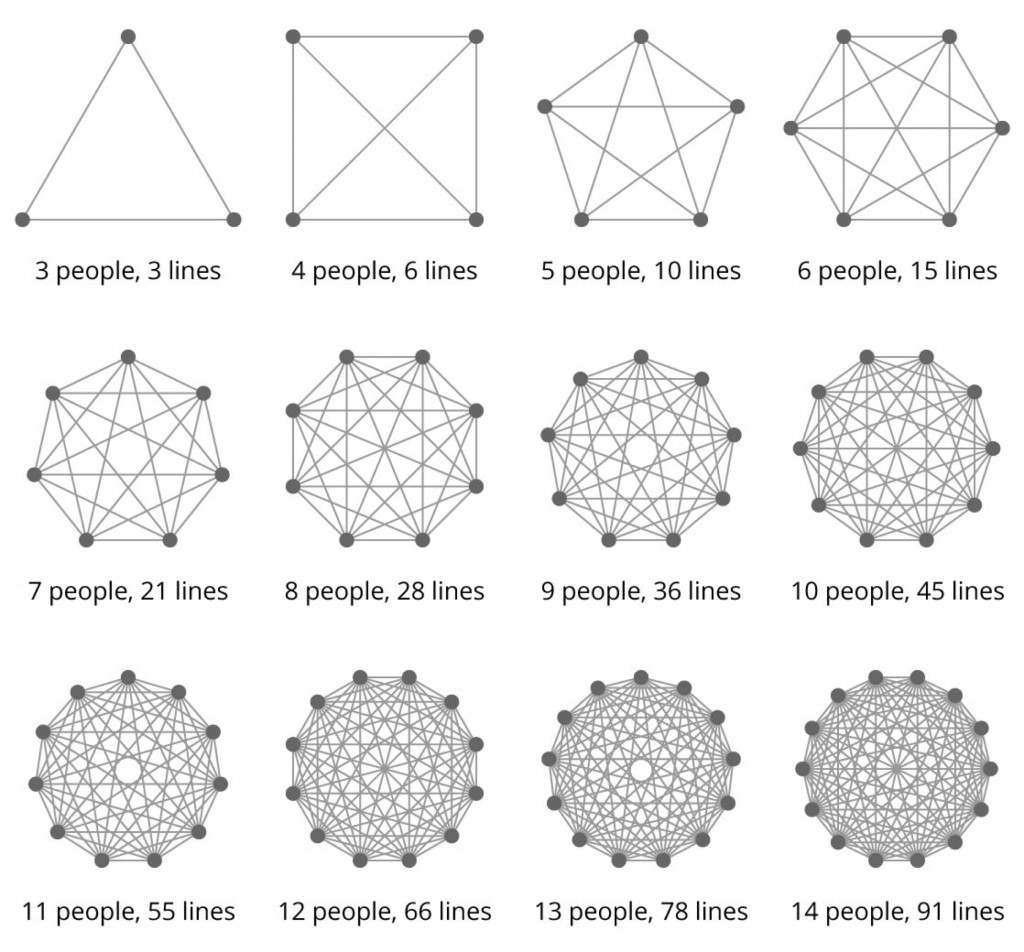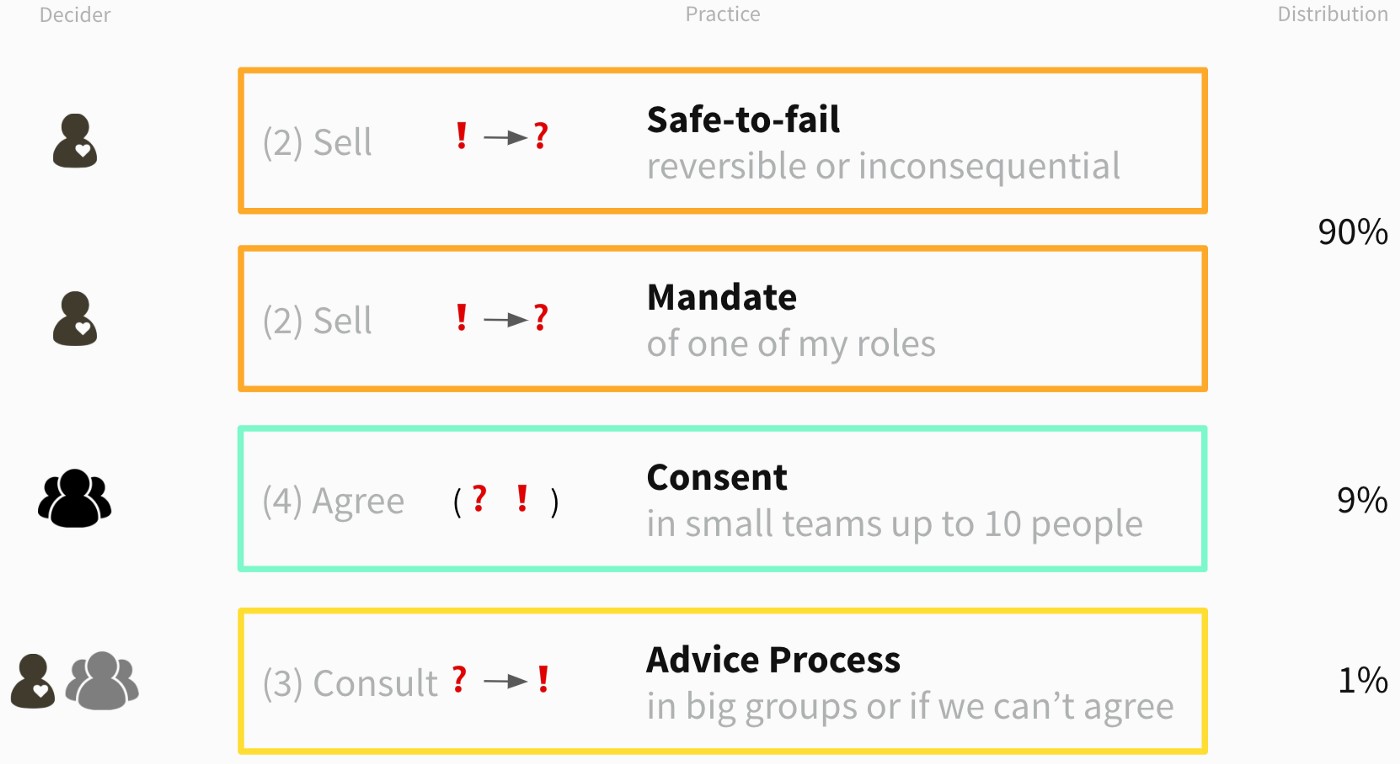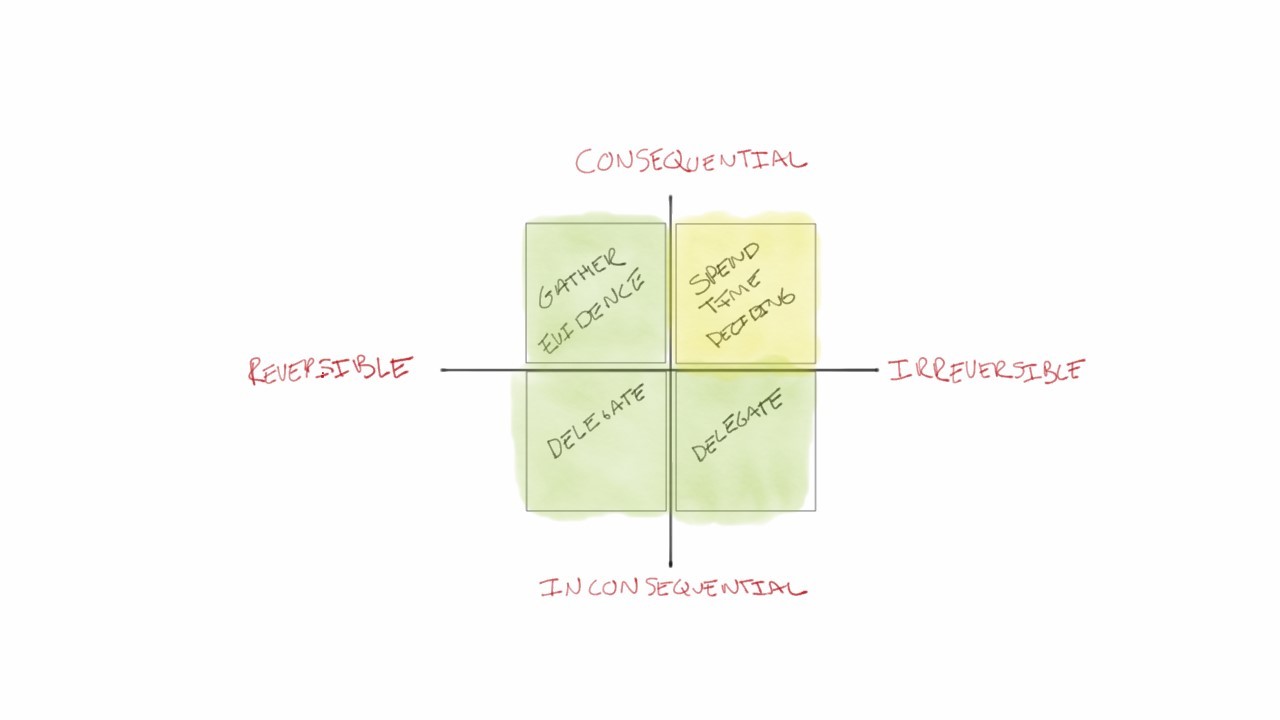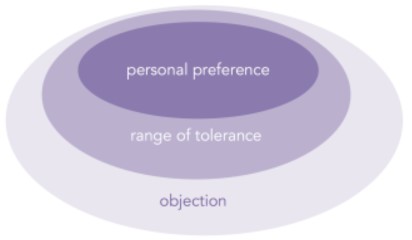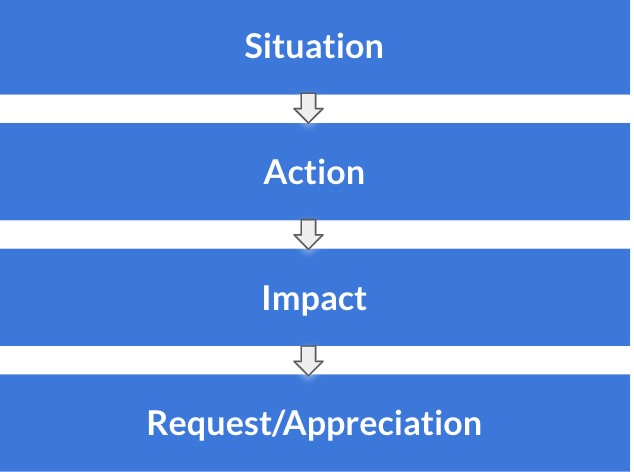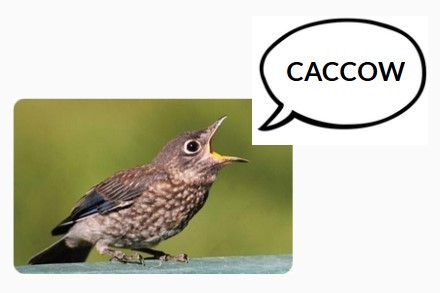Building Healthy & Empowered Teams
Introduction
This workshop and guide were developed because “there's no such thing as a structureless group”, as explained by Jo Freeman in her text, The Tyranny of Structureless. Often people think that when there is no explicit power structure or hierarchy, that everyone is equal. However, this is not the case. There are always implicit power dynamics at play. The vast majority of people have grown up in hierarchical societies from family, to family, to workplaces, there’s someone in charge and someone who has to listen to them. These are explicit hierarchies. But there are also implicit hierarchies, such as the cool kids at school who call the shots and get the back seat of the bus. Those kids don’t have any official titles that give them that power, they have it because others want to be seen and liked by them. This is one example, but implicit power can mean an advantage for one person over another due to their sex, age, race, class, abilities, etc. These injustices are present in society and will be present in our team unless we do something about it. By proactively deciding how we organise, we can reflect our values and leave behind ways of working that reproduce the injustices in society.
Building teams is an important part of community building because just as you want a good culture in the community, it grows from the people who are organising and how they relate to each other. When we build a team, the culture we create sets the tone for the community project that grows from it. Do you want the culture to be one where everyone turns to you and is lost without you? Or one where people are willing to step up and use their own judgement, especially when you need to take a break from the project?
Trust is essential to working as a team. By having a clear structure of how you organise, you can be clear about what to expect from each other and where your boundaries lie. This will enable you to build trust which is essential for a healthy, productive team and in order to create an experimental culture. See more on Building a Culture of Trust & Support.
Most importantly, teams stick together when the going gets tough because people don’t want to bail on their friends. Generally, people join community projects and activist groups because they are interested in the activities or they want to change their community or world. However, people stay for friendship. These means teams in volunteer contexts should make room for getting to know each other and having a laugh outside of a meeting context. Cups of tea at each other’s house, potluck dinners, pints in the beer garden, or just spending part of the meeting chatting is an important part of being a team and should not be underestimated.
What is a team?
A team is a group of people who are dependent on each other in order to achieve a shared purpose. Creating a team is important because otherwise you’re a random bunch of people pulling in different directions and prone to distrust. A team has a sense of unity in achieving their shared purpose and they collaborate and support each other
We recommend a team is a maximum of 6 - 8 people. Why not more than 8 people? Because as you can see in this picture, the number of connections you have to maintain dramatically increases after 6 - 8 people. 6 - 8 is manageable. After 8 your team can create subteams, e.g., one person working on the newsletter, then it expands to 2 and then maybe 3.
When the team becomes more than 8 people, you may want to start thinking about creating off-shoot teams, as shown in the diagram below.
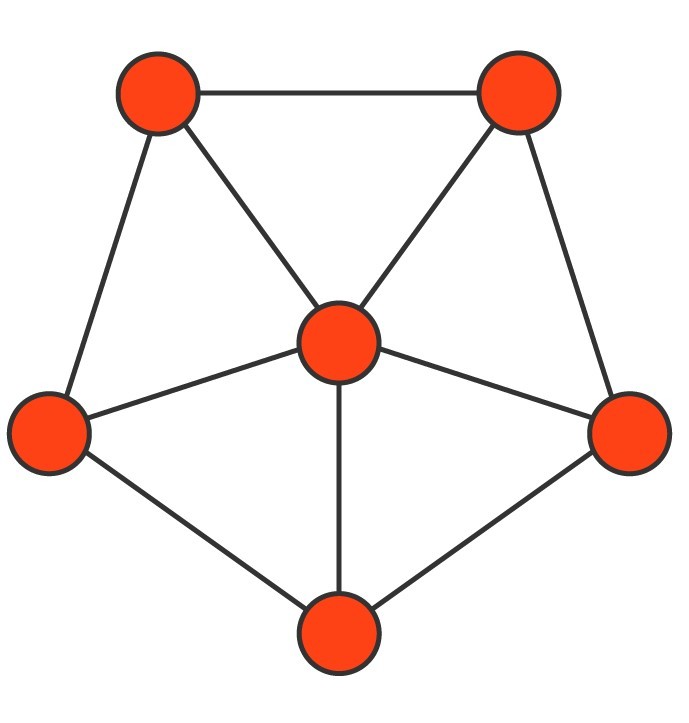
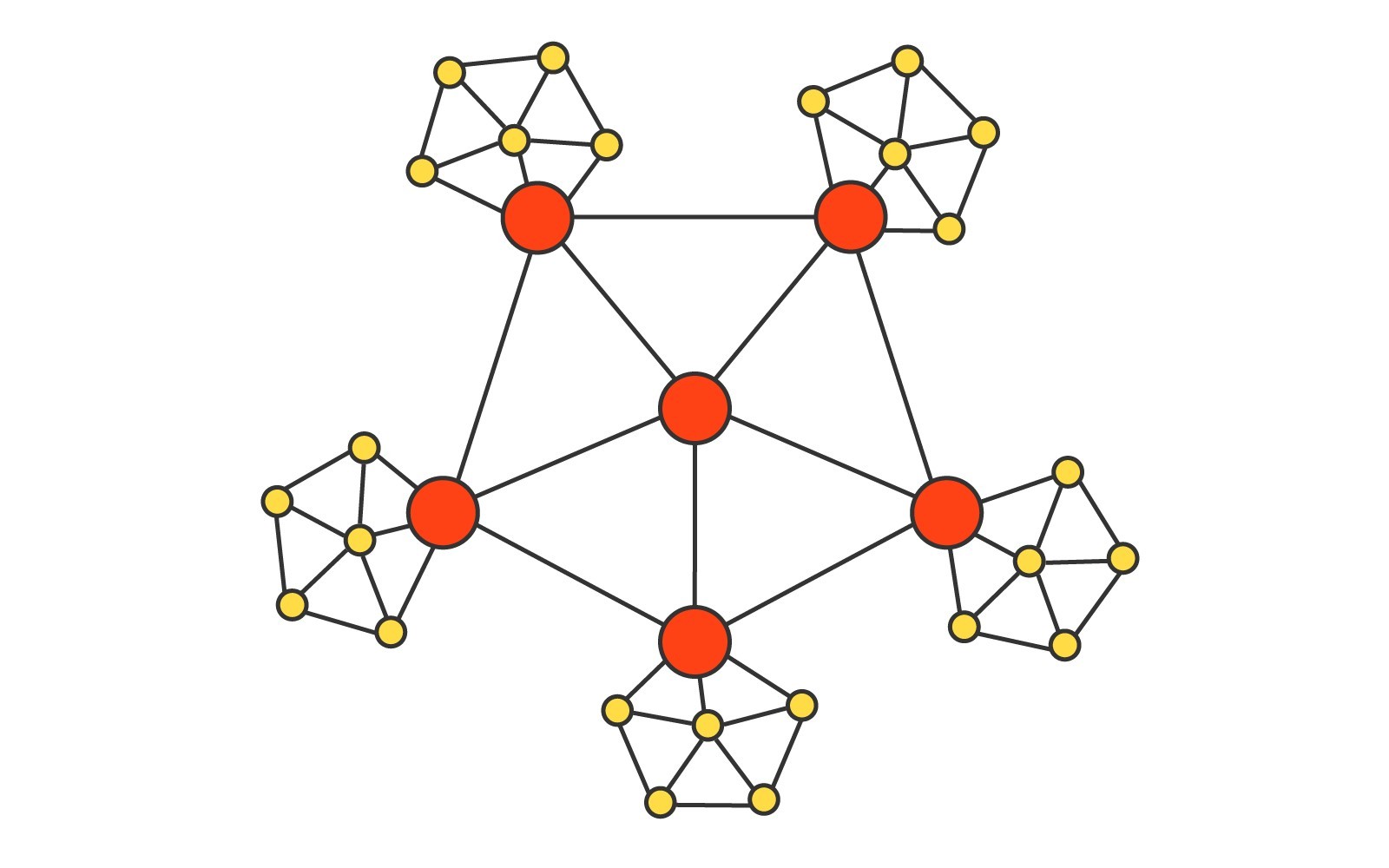 Image reference: Act, Build, Change
Image reference: Act, Build, Change
What makes a good team?
There are 5 key elements that make up a good team:
Feeling safe (Trust)
This is by far the most important. It determines how easily members can take risks, make mistakes and ask for help without fear of retribution from the rest of the team.
Dependability
Effective teams are ones where members can rely on each other to deliver work when agreed.
Structure & Clarity
How are decisions made? Who is doing which role? Do I know exactly how our work is structured?
Meaning Is the work personally meaningful to people in the team?
Impact
Do people feel like their contribution is having a significant impact on the overall purpose of the team or organisation?
Here are some questions you can ask yourself as a team:
- Can we, as a team, take a risk without feeling insecure or embarrassed?
- Can we count on each other to deliver high-quality results on time?
- Are our goals, roles, and execution plans clear?
- Are we working on something that is personally meaningful to each of us?
- Do we fundamentally believe that the work that we’re doing matters?
Volunteer team structures
Team structure matters more than the amount of free-time people have to give:
- If teams are interdependent, it encourages people to get shit done as people are waiting for them
- Equal division of labour encourages people to give more time. We need equal workloads in teams - more important than free time.
- Spending less time in meetings! Do meetings for relationship building or coordination, not doing the actual work. Less time in collective meetings.
The difference is 4 hours/volunteer/month vs 40 hours! 10x difference. Also, people who receive more training are more committed time-wise.
What do we want to do?
Shared Purpose
Teams need a purpose that engages their commitment and orients them in a shared direction. They need something that gives them meaning and to work towards! The purpose needs to be shared because it needs to be something that each person buys into — that’s why it can be really useful to create the purpose together.
Teams should have 3 elements in a shared purpose:
- Clear: What exactly are we trying to achieve?
- Challenging: A challenge can be motivating and can encourage dreaming big.
- Consequential: Where does it fit into the bigger picture? A shared purpose in a volunteer team should tie back to how it fits into the overall purpose of the organisation or the wider group you’re working with.
How to create a shared purpose
What do we want to achieve? What does the world look like when your team has finished their work? This should be written like the outcome you want to see, e.g., complete the sentence… ‘If our team fulfilled its purpose, there would be…’ or ‘We imagine a world where…’. For example, if your team If the Aylesbury ‘Reclaiming your Local Council’ team fulfilled its purpose, there would be participatory democracy at the local council level, independent of party politics. A useful facilitation tool for helping a team to create a shared purpose is pyramiding.
- Solo reflection: Everyone writes down their understanding of the team’s purpose - 5 mins
- Pair share: Share your statement with another person & combine - 15 mins
- Pair the pairs: Each pair shares and combines their statement with another pair - 15 mins
- Each group shares with the whole group - 10 mins
- Create one statement that captures the all key points - 15 mins
If one statement cannot be reached within the meeting time. You can ask one person to take the final statement from each of the groups and then present it to the team at the next meeting. The team can then decide whether this reflects their shared purpose and adjust it as necessary.
Projects
What projects do we need to reach to achieve our purpose?
Now let’s consider what we need to do to achieve our purpose: what milestones do we want to set? Projects & milestones are important to set out as it provides valuable evidence of when a team is making progress towards their purpose. When projects are completed and milestones achieved, teams should celebrate each other for making meaningful progress! Celebrating others and recognising achievement is an important part of building a healthy culture of trust & support.
First, we’re going to do some divergent thinking. That means thinking about all the possible things we could do or goals we could set. Then we’ll narrow it down with some convergent thinking.
Divergent Thinking - 12 mins
- Solo brainstorm all goals on post-its - 7 mins
- Write down the opposite of a goal you’d want to set - 5 mins
- Then try switch that opposite-goal to something positive, a goal you would want to set - 5 mins
Convergent Thinking
- Map them on scale of winnable (achievable) and worthwhile (impactful)
- Consider whether it’s better that some happen before others (maybe number the order they need to happen in)
- Consider which ones would be the most enjoyable to do, that suit your interests best
- On the basis of either of the previous criteria, prioritise which one you’re team will work towards first
Then take those one or two milestones you want to work towards. Brainstorm how you would achieve them- what steps and activities need to be taken in order to achieve that milestone. If you discover that one isn’t so feasible, then you can pick another milestone.
Roles
Why do we need roles?
We need roles because it’s really useful to:
- Know what decisions you can make without having to check with others
- Have someone bottomlining a task or set of tasks/activities (that means one person is going to make sure it gets done, not that they have to do it themselves and that no one else can do it)
- Know who to talk to about specific activities
What roles do we need?
So you’ve talked about the milestones your team needs to achieve and some activities to get there. Now let’s group those activities into roles. Roles should be based on outcomes you want to achieve, e.g., finding a venue for a fundraiser.
There may be some roles that will need to be done on an ongoing and relevant to the team generally (e.g., newsletter writer). And there may be other roles that will be project based (finding a venue for the fundraiser).
- Brainstorm all the tasks or activities that need to be done to achieve your milestones or in a project.
- Group the tasks you think make sense together.
- Discuss any disagreements.
- Decide on the wording of the roles… (more on decision making later).
Nominating people to roles
This is an alternative to a more formal process outlined here. Given the activities we’ve outlined, what roles do people see for themselves? What interests align with the activities we’ve prioritised? Do a ‘go-around’ which is where everyone in the team gets a chance to speak.
This may not be the most speedy way to decide roles, but it’s important to get to know each other. You can either let people speak freely or time each other so that everyone has 3 minutes each, for example.
Each person states...
- What tasks they like doing, what gives them energy
- The role/area that they’re interested in
- Their level of commitment in terms of hours of week and whether they have other projects on the go
It’s perfectly fine to share roles if that suits best. You can withdraw your consent and make changes to these at any time, so go with something that’s good enough to try and make changes later. This allows you to make decisions and move forwards and change things when you have more info based on your experience.
The Dark Side of Roles
Roles can tend to emphasise an individualistic perspective, which undermines team effort. They can lead to team mates focusing on their role (I’m just doing what's in my mandate), above achieving the purpose of the team. Individual roles become more salient because they're written down. This could be counteracted by consenting to group agreements which emphasise the team’s cultural values.
More important than roles are projects. Projects within a team can be a group of 2 - 4 people working on a specific task or towards a specific goal. Project teams are small enough that roles are not as important and people can keep track of who’s doing what within the team. Projects like this can feel more collaborative than the idea of roles.
Roles can be good for clarity of who is doing what and structure of teams. This clarity means psychological safety!
How do we want to work together?
This section is about helping your team figure out how you want to communicate, make decisions, and give feedback and set boundaries.
Decision Making
Why should we decide how to make decisions?
A mutually agreed decision making process creates clarity and clarity can prevent some types of conflict. People need to know that proposals and ideas they bring forward are going to be handled in a fair & democratic way. This encourages people to bring more ideas and take risks when they are confident the group will respect an agreed decision-making process. (They feel their ideas will be assessed on its merits rather than them having to fight for space to be heard in the group). And so a clear decision making process can help to create psychological safety amongst team members. Also, having a say in how the team functions is empowering - it models the democracy we want to see.
Group vs Role Decisions
Group decisions are great to get input from everyone. But they can take a long time so we suggest you only do them when necessary. Most decisions should be made by someone in a role. If a decision is recurring delegate it to a role by adding it to an existing one or creating a new role.
People can still input into a decision if the role holder uses the advice process. This is where you ask advice from those most affected by the decision and/or those with expertise (including lived experience). The role holder doesn’t have to follow the advice, they consider it and weigh it against all considerations.
Who should make decisions when?
One guideline of how often to use each process can be seen below:
- 90% of decisions made by individuals from their role (smaller & reversible decisions).
- 9% by a group decision making process (e.g. consent) when a decision is more important)
- 1% by individuals deciding for groups (advice process when a group can’t decide).
Individuals: If a decision has a smaller impact or can be corrected easily, that is an indicator that an individual could make it alone. An example of this would be writing a single social media post for a shared page (as each individual social media post isn’t that important).
Group: For more important and irreversible decisions, that is a time to seek consent from the group rather than deciding individually. An example of this might be moving office. Moving office would have quite a large impact and is largely irreversible so it’s best to seek consent from the group before deciding this yourself!
Individuals deciding for groups: If the group cannot reach consent, then it is best the group delegates and trusts one person to make the decision, who has the responsibility to consult the relevant people and gather advice before doing so. For example, when the group cannot decide who goes to meet the local councillor, you could pick one person who takes all of the considerations (what is the meeting about, who has knowledge in that area) into account and accept whatever decision they make.
Teams can decide what decisions they’re happy for team members to make themselves, and what ones they want to make as a group.
Group Decision Making Processes
There are many ways to make decisions and many different types of decisions. Here are some different decision making processes:
- Informal consensus: This is a very common approach to decision making. It happens when someone presents an idea and no decision making process is explicitly made clear, but it is assumed that everyone must agree with the idea and so there is a pressure to conform.
- Formal consensus: In consensus based decision making, the group is asked “Do you agree with this proposal? Do you approve?” Though not everyone needs to agree with the proposal, it can make work slow as not everyone might agree.
- Majority vote: everyone can vote for one option and the option with over 51% wins. You can also have a supermajority of 60% or 80% (this level would be decided beforehand).
- Consent: In consent-based decision making, the group is asked “Is this safe enough to try or will this proposal cause harm?” This allows the group to improve the proposal so that it doesn’t cause harm, but means we don’t have to wait till proposals are perfect, we can try things out and adjust or stop if it’s not working well. It’s easier to find something that everyone can tolerate, rather than something everyone loves.
There are many more decision making processes. The Decider app helps you determine what decision method suits the decision you’re trying to make. All of these methods have pros and cons which you can see if you click on the buttons at the bottom of the Decider app homepage. Next, we will describe consent based decision making in more detail, since it’s the process we recommend.
Consent Based Decision Making
A key thing about consent is that it can be withdrawn at any time. You would then bring a new proposal and bring it to the weekly meeting.
3 Levels of agreement:
- Support: Enthusiastic to lukewarm support
- Support with concerns: Would like to share some concerns but OK with proposal going ahead
- Objection: Veto the proposal going ahead until the proposal is changed
Objections:
- Objections must be principled or grounded in evidence, rather than a personal opinion or preference.
- Concerns (e.g., this proposal is incomplete) need to be addressed but are not a reason to stop the proposal going ahead.
- We pass a proposal when it’s safe enough to try, not perfect.
- Objections should be welcome because addressing them will make the proposal stronger.
Whatever decision making process you decide to use in your team, it’s important that you DO decide on one. Not having a clear decision making process can lead to stagnation. Consent allows you to try things and change them when they don’t work - this keeps us experimenting.
Sample Decision Making Agreements
- We want to make decisions in a way that is inclusive and effective.
- We use group decision making when it’s important to do so, not by default.
- If a decision is recurring, we delegate it to someone in a role unless it’s important that that decision is made by the team.
- We use consent based decision making for group decisions. We recognise that consent can be withdrawn at any time (and the person withdrawing consent is encouraged to bring a new proposal).
- We pass a proposal when it’s safe enough to try, not perfect.
- Someone making a decision seeks the advice of those affected by the decision beforehand. They take the advice into consideration, but do not have to follow it.
- If a decision creates greater workload, the decision is made by the person who would take on that workload.
How to decide how to decide?
You can use the most inclusive decision making method to make the decision to use a different method. For example, the team could use formal consensus to agree on the decision making agreements (which could include consent based decision making which would be used from then on).
Group Agreements
Why do we need group agreements?
Group agreements are about understanding each other’s values around working, how you’d like to work together as a team and agreeing on things you can hold each other to. Group agreements are about understanding each other’s values around working, how you’d like to work together as a team and agreeing on things you can hold each other to. This is extremely important in building a healthy culture of psychological safety within teams, as now each person knows what other people in the team cares about. Psychological safety and trust are some of the most important things in determining the effectiveness in a team.
There are many different types of group agreements we’re going to talk about here, e.g., ones around decision making to guidelines for meetings and giving feedback.
You don’t have to decide all group agreements within the same meeting. They can be spaced out, but it’s better to do them sooner rather than later because group agreements help set up the culture and help you keep each other to account. You can also copy the sample group agreement we have here and then change them as the need arises.
Brainstorming Your Agreements
Now let’s make some group agreements and agree to them! Use the pyradming process described above to ask the team…
- What’s important to you about decision making? What agreements around decision making would you need to make this team a safe and respectful place for us to work in?
- Try to make them practical.
- Take for example "it's alright to disagree" - how would this work practically? You could add "... by challenging what a person says, not talking the person themselves."
- Another example is Confidentiality. This is also quite vague and you will need to discuss what people understand by it and what level of confidentiality they expect from the group.
- Solo: reflect on the question and write out your ideas for agreements
- Pairs: people get into pairs and combine any similar proposed agreements
- Round: As a group, each person shares what’s important to them and not to repeat any that have already been mentioned (Arrange them into clusters of post-its on the wall if possible)
- This should be captured in a place everyone can see.
Consenting to Your Agreements
After you’ve captured each of the agreements somewhere everyone can see, you’re ready to use consent based decision making! Here are a series of steps… Remember they don’t have to be perfect, you can change and update them at any time.
- Questions Round: anyone can ask questions to make sure they understand what the proposed agreement means
- Reaction Round: everyone gets an opportunity to say whether they have concerns (whether they are quite mild or very serious ones that would prevent them from supporting the proposal)
- It’s ok to be indifferent to some of the proposed agreements, they should be included if they’re important to someone.
- Controversial agreements could be taken out at this time, and rephrased/worked on by those with strong opinions and then proposed as an additional agreement at the next meeting.
- Consent round: each person states whether they support the proposal or object to it. If there’s an objection, ask the person to explain more. If the objection is valid (see above), amend the proposal until there are no more objections.
It’s important to explain the process to your team before diving in and to be strict with keeping them to questions during the question round. Otherwise, some people will start reacting when they may not fully understand the proposal which causes a lot of confusion. When new people join the team, they are asked to read the group agreements and consent to them.
Feedback
How to give feedback?
It’s important to have a way of addressing issues if something isn’t working. We encourage you to be open and honest about when something isn’t working for you by giving feedback. Honesty is essential for building trust, and trust is essential for healthy teams.
Feedback is a really important part of organising as a volunteer team where no one person is in charge. It will help the team work better or help you participate more fully, or both, so we can think of it like a gift to the team. The purpose of feedback is to help each other reach their full potential and also to help us as a group to move towards our shared purpose. It’s important to note that you should give positive feedback when things are working well. This helps build trust within the team and lets people know they are appreciated. It makes it so much easier to give other feedback later on so it is not just a tool when things are going wrong!
What to give feedback on?
Feedback can be useful when you feel a difference between how things currently are and a better way in which things could be.
Feedback can be about small things that your team mates might do that piss you off, little things you appreciate or major things about the direction of the team’s work. We want to encourage a culture of valuing each other, raising concerns and being honest, so we can work together as best we can.
Example: I want to chat about people arriving late for meetings. I make an effort to arrive on time for commitments and I feel disappointed & let-down when people arrive late. It means we get less done overall and this work is something I really care about and is close to my heart. My request is that people arrive a few minutes early for a meeting so we can start on time and even have a social chat beforehand!
When to give feedback?
We suggest that feedback is welcome at any meeting. If the feedback is primarily relevant to one person, we suggest you share it with them outside of the meeting. If it’s relevant to the whole group, the weekly meeting is the most appropriate place to share it.
Giving feedback to a team/in a meeting:
The person describes their feedback and if they have an idea on how to resolve it, they write it down as a proposal or they share it with their teammates ahead of the meeting. (Remember not all work has to happen in the meeting, the more that can happen outside of it, the better.) If the person with the feedback doesn’t know how to resolve it, the team could try to work it out together in the meeting, or a small group could work on it outside the meeting and make a proposal for the following week.
Framework for giving feedback to an individual:
- Situation: What was the context? Be specific of where and when
- Action: What specific action or behaviour did you observe? Don’t interpret their actions or make assumptions of their motives.
- Impact: What was the impact of their actions? How did it make you feel? Do they understand/see that?
- Request/Appreciation: State requests for future behaviour or express appreciation if positive.
Tips for giving feedback:
- What is the intention? Is it to help someone else progress? Is it to share how you have been affected by something? Whatever your intention, it should be to support the other person and for your relationship with them.
- Timely: Give the feedback as soon as possible after the situation. But it’s best to wait until any emotional energy has settled down so that you can give the feedback in a calm, clear-headed way.
- Is this the right time? Ask the person whether they are able to hear some feedback from you at that time? They may be having a difficult day and it may be better to rearrange another time to speak.
- Give it in private: Bringing something up in front of others can make someone feel exposed or vulnerable. Give feedback in private if possible.
- Why it matters: Explain why it’s important to you or the team. People will be more willing to engage if they understand where it’s coming from.
- Be specific: What exactly are you giving feedback on and can you provide an example of the behaviour?
- Avoid making assumptions: Avoid interpreting someone’s behaviour and guessing their motives. It’s best to ask questions and inquire what their motives/intentions were.
- Double check: Make sure the person you’re giving feedback to has understood your concerns. Ask them to summarise what they heard or ask open questions.
- Openness to dialogue: Be open to hearing the person’s side of the story and listen to their needs so they feel their wellbeing matters. Action plan: Develop an action plan going forward, so that both parties can move forward together.
- Vocab: Avoid words like “always” and “never”
Tips for receiving feedback:
- Be receptive and listen. You may want to clarify your intentions or something that you did, but try not to jump to defending yourself.
- Trust in the person giving you feedback: They are sharing something that is important to them, and may be useful to help you grow as a person or for your relationship to grow.
- Clarify: Make sure you have understood fully by repeating back and checking you’ve understood what they are saying.
- This is an opportunity for growth! Ask for suggestions and how to improve.
Resources for reading more about feedback: Tips on How to Give and Receive Feedback
Use the Consenting to Your Agreements process above to help your team decide what’s important to them about giving feedback. Here are some sample agreements that include giving feedback, meetings and general ways of working.
Sample Group Agreements for Meetings & General Ways of Working
- Everyone is able to contribute
- more talkative people: show a little restraint
- quieter people: your contributions are very welcome
- Only one person speaks at a time
- put up your hand if you want to speak and wait for your turn
- Respect each others' opinions, especially if you don't agree with them
- Confidentiality - personal details and stories should not be repeated outside of the space in which they were shared without permission
- Be conscious of time - help stick to it, or negotiate for more (e.g., we’ve given 15 minutes for this decision but ...)
- Mobile phones off to minimise disruptions
- Regular breaks - acknowledge that concentrating for long periods of time is difficult
- Communicate via email or Mattermost (Whatsapp is only for very urgent things)
- Respect that the facilitator may need to interrupt at times
- We acknowledge when we have broken a commitment (this prevents a culture of in which breaking commitments is normal)
- Feedback is welcome because we recognise that processing tensions is part of becoming a healthy team and keeping team mates fully engaged.
- When someone brings a tension, we collectively take it on and try to resolve it.
How to help your team along
Leadership
What do you think of when you think of a leader? Who do you imagine? Usually we think of leaders as someone, usually a man, a CEO type figure, who has a vision and tells people what to do and lead s the team to victory. This is one style of leadership - a style that will probably not be that helpful if you want a team that can manage itself, a team where anyone can step up when they see the need for something to be done - a collaborative team.
There are many different styles of leadership, such as visionary, mentoring, facilitation and thought leadership. We’re going to focus on facilitation leadership because it is the most appropriate approach when creating an empowered team. Facilitation leadership is helping the team achieve their purpose and ensuring everyone can contribute so the team can harness its collective wisdom.
Different styles of leadership may be useful for different aspects of a team. For example, someone may have an idea for a specific action that they take the lead on organising in a more traditional way. But generally, we recommend facilitative leadership for helping the team achieve it’s shared purpose.
There are many different types of facilitation as there are different types of leadership, for example, some facilitators just prefer to be the referee and help the team stick to the agreed process. However, facilitation can also be more than keeping track of the order in which people have their hand up! Facilitators can set the tone of a meeting and so influence the culture.
The purpose of facilitation is to help the group move towards their shared purpose. A facilitator is there to ensure that everyone in the group has equal opportunities to bring their individual gifts to the table, which in turn makes the whole group better off. Good facilitation helps us harness the collective wisdom of the entire group, by making sure that everyone participates fully & equitably in the group environment.
Facilitative Leadership Skills
Here are some key skills for facilitative leaders that spell CARES:
C: Celebrate people's contributions and achievements!
A: Aligned with the purpose
R: Encouraging taking action points/responsibility
E: Creating an environment in which everyone can contribute fully
S: Synthesising what’s being said & making requests explicit. Sometimes people don’t
Rotate the facilitator and the leader
People learn by doing and so there’s no better way to become a good facilitator than trying it out. Encourage your teammates to give it a go and let them find their own way even if it’s not how you would do it. Check out the feedback section to learn more about how to ask if people want feedback and then give good feedback.
Facilitative leadership can be done separate from facilitating a meeting. People often assume there can only be one leader, however, teams can be leaderful. That means anyone can step up when they see the need for leadership. Explicitly changing the leader can also be really useful. Being a leader can be tiring, so just as geese flying in a V rotate the leader, empowered teams should too.
Facilitation Leadership Resources
Facilitation as a Leadership Style
Facilitation is a Leadership Skill
The Art of Facilitative Leadership
General Facilitation Resources Meeting structure A Quick Guide to Holding Effective Meetings
Facilitation Tools
Here are some different ways of running a meeting that can help your teammates contribute to the fullest. Some processes can draw people out and make the task a lot more fun.
Process Tools
- 1,2,4 all
- Described above
- People pair up and share their thoughts, feelings and stories. This can be very useful after some solo reflection time.
- Negative Brainstorm
- Take the question you want answered and flip it so it is framed negatively. For example, if I want to know ‘how can we build trust in our team?’ I could turn that question into ‘how can we build mistrust/destroy trust in our team?’
- Spend some time brainstorming around this question
- Then take each of those suggestions, e.g., ‘insult each other every time we see each other’ and flip it again, e.g., ‘compliment each other every time we see each other’.
- It’s a really fun technique that gets a few laughs and helps people think more freely.
- Double diamond
- Starhawk visioning:
- imagine your perfect world, how do people communicate, what does it look/smell like, what are the group norms? Can be a prelude to brainstorming. Put top 3 on post-its.
- Appreciative enquiry:
- Think back to when you were in a good team, how many people, what about that team was good? How did you meet? What did you do? What were the norms? How did make decisions? How often did you meet? What was the gender balance? Feel like you have autonomy?
- Turn-based contribution:
- Ask a question & people solo brainstorm
- Pick 3 people at random
- Ask a different question & people solo brainstorm
- Then pick a new
- Ask a different question & people solo brainstorm
- Then another 3
- So everyone gets a chance to speak. Works for related questions, each with multiple answers.
Tools, e.g., double diamond, need lots of different methods for different things
Tools:
- Pyramiding: Pyramiding is a common technique used to avoid anchoring. Anchoring is the process when one person’s idea can cause the rest of the group to become “anchored” on that particular proposal, rather than exploring the rest of the available possibilities. Pyramiding, sometimes called 1-2-4-all, is a process where everyone in the group is given time to brainstorm individually before comparing ideas with other people. This means that we have the widest possible range of ideas, which we then choose to converge on. The process starts with an individual brainstorm (a few minutes is usually enough), before going into pairs and comparing ideas. If you want a smaller number of ideas at the end or just the best ideas, you could ask the pairs to pick their top five favourite ideas. In the next step, two pairs come together to form a 4 and between them they share ideas and select their collective favourite six ideas (as an example). Then this 4 can share their top six ideas with the rest of the group when it becomes time to present back.
- Rounds: A round (or go-around) is a tool when everyone in the group is asked to give their thoughts or reaction to something, going one after another in a seated or online arrangement e.g. clockwise around a circle. This is a great tool in making sure that everyone in the group has an equal opportunity to speak and should be used often. It can also be used by the facilitator when they are not sure how to proceed and would like support from the group, for example if there is a controversial proposal. An example might be: “Okay everyone so Linda raised a good objection and I’m not sure how to integrate that into our current proposal. Can I ask everyone to have a round so we can try to think of ways we could make this work?”
- Popcorn: If you don’t want to do a round or you think that not everyone needs to contribute at a certain stage, you can ask people to do it “Popcorn-style”. This just means people speak when they are ready to contribute, in no particular order of seating. The idea is that it’s like popcorn popping in a microwave without any direction or pattern!
- Prioritisation/voting
- Reflect back
- Energisers
Building a Culture of Trust & Support
A study by Google found that building psychological safety is really important for effective and healthy teams. What is psychological safety? It’s the shared belief that teammates have that they can throw out ideas without fear of judgement, they can take interpersonal risks and know they will not be rejected or embarrassed for speaking up, it’s a feeling of being comfortable enough to be yourself - your full self. So although the context of a professional working environment such as Google, is quite different from that of community organising, this sounds like a feeling we want to create in our teams. One of the researchers on the project said ‘If only one person or a small group spoke all the time, the collective intelligence declined.’’ (more here).
Here are the key aspects of building psychological safety according to Google’s study. Just remember: CACCOW
C: Celebration - Recognise people and their efforts. Make your teammates feel valued and make the work fun.
A: Autonomy: Allow people to do work as they see fit. Generally, if someone is doing the work, e.g., designing and printing the flyer, they should be the one who gets to have decision making power over it.
C: Caring: Don’t just meet for work, invest in personal relationships!
C: Clarity: How do we decide and do we know who’s doing what? The sections on decision making and group agreements are really relevant here.
W: Wholeness - Encourage people to bring their full selves and role model this through vulnerability. People generally don’t open up unless you open up to them, so be brave and share a personal story.
Resources on Building Psychological Safety
- Re:work Guide: Understand team effectiveness
- What Google Learned From Its Quest to Build the Perfect Team
Relevant Reading
- The Tyranny of Structureless
- Act Build Change
- Leadership, Organising and Action
- Group Agreements
- Sample Group Agreements
- 11 Practical Steps Towards Healthy Power Dynamics at Work
- How to foster psychological safety in your team
- Where’s the Psychological Safety for Speaking Truth to Power in Self-Organisation?
- Reinventing Organisations (video)
- Consensus, consent, advice, mandate
- Formal consensus
- 1, 2, 4, all
- Processing tensions
- Fierce Vulnerability Agreements
- Sociocracy for All
- Feedback without Criticism

